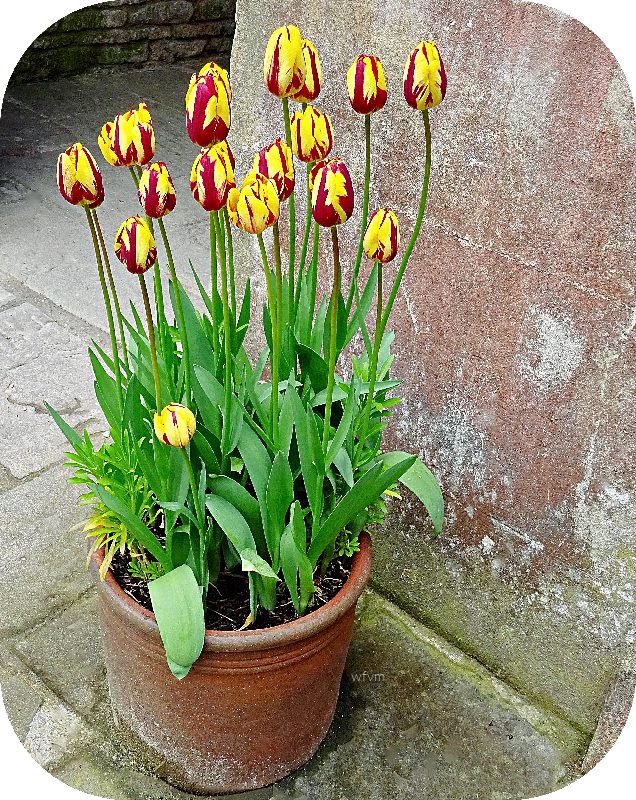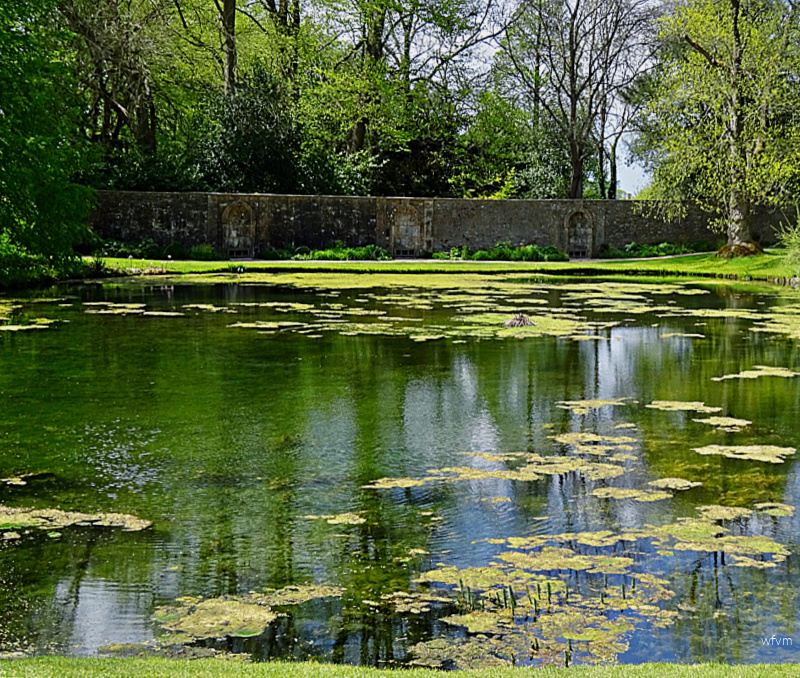The ancient monument we were seeking lies at the heart of a U shaped valley a few miles outside Dulverton, with just two narrow roads down from the moors. Unfortunately for us, our sat.nav. directed us to the most difficult route, a very narrow tortuous single-track road, not one for those of a nervous disposition. The roads high grassy banks were prettily strewn with wild flowers beyond which were ancient forests growing amongst large mossy covered boulders deposited during 'The Ice Age'. At every bend we hoped that no other vehicle would be travelling up towards us - passing places were few and far between. The road was very steep with precipitous boundaries. On arrival, breathing a sigh of relief that we had made it, we temporarily forgot about the return journey as we viewed what we had travelled to see.
Tarr Steps is a Grade 1 listed Ancient Monument crossing the River Barle in a beautiful wooded valley. The steps are a 17 - span clapper bridge (the term comes from the Latin claperius, meaning 'pile of stones') constructed entirely from very large stones and boulders.
The first written mention of the crossing was in the Tudor period, but experts believe that it was built 1000 years BC, making it over 3000 years old.






































